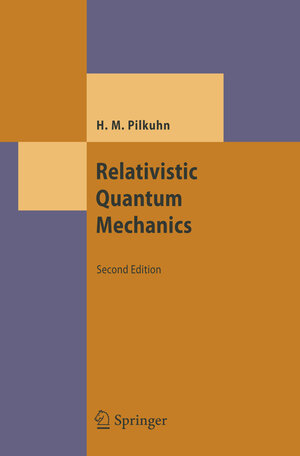
From the reviews of the second edition:
„The chapters on quantum fields and particles and scattering and bound states present material that is not generally treated and therefore makes the book interesting to work through. The presentation is clearly non-standard since the author develops the subject in analogy with Maxwell’s equations rather than using Lagrangian formulation, emphasizing Lorentz invariance. [...] All in all, this is a remarkable book: very condensed and also far off the beaten track when discussing relativistic quantum mechanics. I would not recommend to start with this monograph. [...] It should, however, not lack in any library having a good section on quantum mechanics and quantum field theory.“ (Kris Heyde, Physicalia, 25/4, 2003)
„This is an admirable book. Its five chapters and two appendices give a concise but informative – and distinctive – presentation of several important themes in relativistic quantum mechanics.“ (Dr. J. Butterfield (University of Cambridge), Contemporary Physics 2004, vol. 45, page 89)
„This is the second edition of this book … . This edition includes five new sections and a third appendix. … Overall, this is a useful book to graduate students.“ (T. C. Mohan, Mathematical Reviews, Issue 2007 b)
Relativistic Quantum Mechanics
von Hartmut PilkuhnIn this book, quantum mechanics is developed from the outset on a relativistic basis, using the superposition principle, Lorentz invariance and gauge invariance. Nonrelativistic quantum mechanics as well as classical relativistic mechanics appear as special cases. They are the sources of familiar names such as „orbital angular momentum“, „spin-orbit coupling“ and „magnetic moment“ for operators of the relativistic quantum formalism. The theory of binaries, in terms of differential equations, is treated for the first time in this book. These have the mathematical structure of the corresponding one-body equations (Klein-Gordon for two spinless particles, Dirac for two spinor particles) with a relativistically reduced mass. They allow the calculation of radiative corrections via the vector potential operator. This second edition of the successful textbook adds various new sections on relativistic quantum chemistry and on the relativistic treatment of the proton in hydrogen. Others chapters have been expanded, e. g. on hyperfinite interactions, or carefully revisited.






